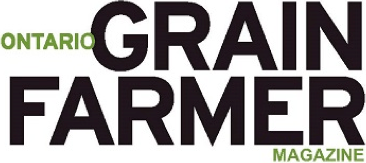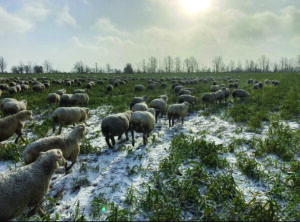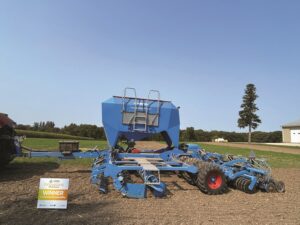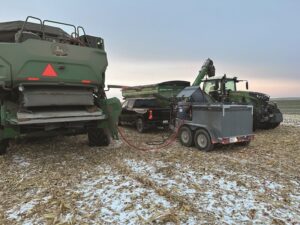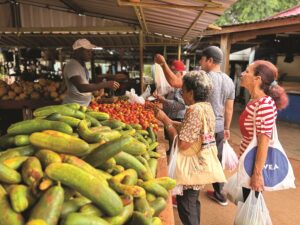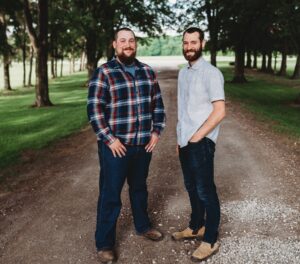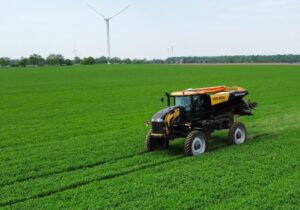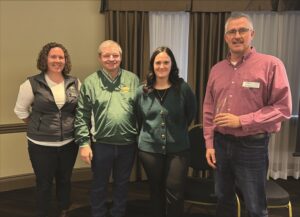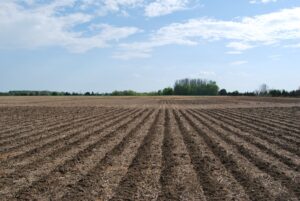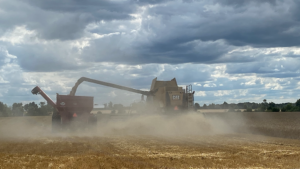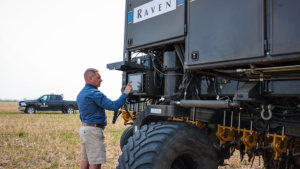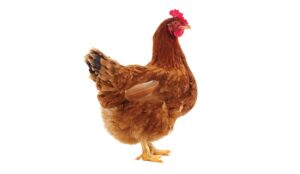Research and extension
Global models give insight into best practices
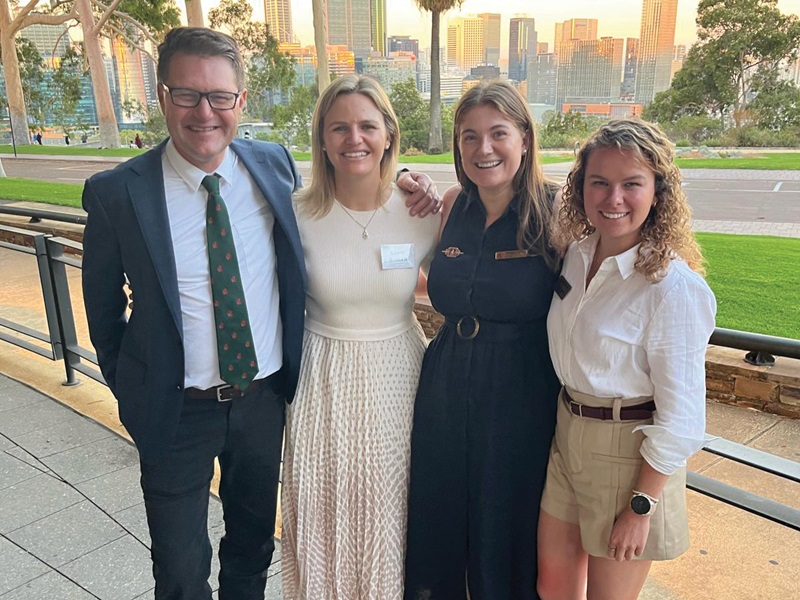
I began my Nuffield journey with the intention of better understanding how public and private institutions can collaborate to enhance agricultural research and extension. My travels have taken me around the globe, down dusty roads in Western Australia, into policy offices in the Netherlands, and through state-of-the- art research facilities in Lincoln, Nebraska.
Agricultural extension systems take many forms, but they all aim to achieve the same goal: connecting research with real-world farming practices. During my travels, I explored how different countries organize, fund, and deliver agricultural extension and how those systems shape innovation, adoption, and farmer engagement. What I found was not a one-size-fits-all model, but a mixture of systems shaped by policy, market forces, culture, and people.
AUSTRALIA
Australia’s environment is characterized by increasingly hot and dry conditions due to climate change, challenging soils, and very limited direct government support. Australian farmers are putting on a masterclass in resilience and collaborative problem-solving. In the absence of adequate state or federal agricultural extension, Australian farmers have had to find competitive edges through collaboration and research and development. Growers have organized their own research and knowledge-sharing organizations, called grower groups. Grower groups are farmer- led, not-for-profit organizations that prioritize locally relevant research and share results to improve production, profitability, and sustainability. Funding models vary among groups, with some supported by member dues and others by public grant funding or private sponsorship.
The Grower Group Alliance (GGA), based in Perth, is a state-wide network of 95 member organizations, including 60 farmer-led grower groups. The GGA streamlines collaboration across the network and limits administrative burden for individual groups. Grower groups have proven to be powerful vehicles for adoption, especially in remote and variable growing environments. I was fortunate enough to visit the GGA in Perth as well as two of the largest grower groups in Western Australia, the Leibe Group and the Mingenew- Irwin Group. What stood out was not just the professionalism of these groups, staffed with CEOs and with well-defined strategies, but how clearly the research agenda was driven by farmers themselves. When farmers start leading research initiatives, they provide a clear, accessible pathway for public funders and agri-businesses to co-invest in work that delivers practical, farmer-focused outcomes.
UNITED STATES
The U.S. Cooperative Extension System is a well-established nationwide network affiliated with Land-Grant Universities (LGU). It operates through a three-tier structure: federal (United States Department of Agriculture oversight and funding), state (LGU-led coordination), and county (local extension offices with on- the-ground educators). Funding comes from a mix of federal, state, and county sources. In 2024, capacity grants (core operational support) made up the bulk of funding, but there is a growing share of competitive grants targeting specific projects.
Land grant extension agents, who often live and work in the areas they serve, are well- positioned to tailor advice and programming to local needs, building strong relationships and trust within the community. Extension agents work closely with both farmers and university researchers, without the burden of expectations to engage in international research communities the same way that academics are; this structure enables them to fully invest their time into extension activities over publishing work.
One example of this integration is the University of Nebraska-Lincoln’s (UNL) Testing Ag Performance Solutions (TAPS) program, located at the Eastern Nebraska Research, Extension, and Education Center (ENREEC). The TAPS program is a collaborative, real- world farming competition that allows producers to virtually manage real field plots using actual agronomic, market and financial data. Through a blend of decision- making, peer learning, and expert feedback, farmers test strategies for irrigation, nutrient management, and profitability. Participants gain insights not only from university research but also from each other, often reevaluating their own on-farm practices as a result. Interviewees described TAPS as a “game- changer” in how extension builds both technical capacity and social learning among producers. It exemplifies how well-designed extension initiatives can move beyond one- way knowledge transfer toward co-creation of solutions with stakeholders.
Despite these strengths, the broader extension system in the United States is under pressure. Inflation-adjusted funding for core programming has declined, with states increasingly reliant on competitive grants that can fragment service delivery and favour well-resourced institutions. This has started to create a gap in services to farmers, and the rise of commodity board agronomists, private consultants, and agribusiness advisors has created a more pluralistic advisory landscape. As land-grant university leadership focuses more heavily on research outputs and global rankings, the role of extension as a public service is, in some cases, being deprioritized.
THE NETHERLANDS
The American extension system continues to play a critical role in connecting science to practice in agriculture and rural development. However, maintaining its relevance and impact will depend on renewed investment, structural adaptability, and clarity of purpose in an increasingly complex advisory landscape. In contrast, the Netherlands has moved away from a public model and pursued a model that prioritizes privatized extension.
The Dutch extension system has undergone significant changes since the mid-1980s. Initially government-run, extension services have since become heavily privatized and diversified. Public funding has shifted toward research and innovation projects, with private consultants, input suppliers, and farmer organizations now playing central roles in extension.
One of the primary benefits of this privatization was increased flexibility and responsiveness to farmers’ needs. It enabled the emergence of farmer-funded research and development through commodity board mechanisms and the proliferation of private extension services that helped bridge the gap between research, policy, and practice.
BO Akkerbouw is a levy-funded knowledge organization for arable farmers in the Netherlands. They fund research and knowledge transfer projects through farmer levies and matching funds from public- private funding schemes. Their system includes farmer-driven priority setting, multi-stakeholder collaboration, and strong integration with research institutions to ensure projects are both scientifically valid and relevant to their farmer members. Through initiatives like these, farmers gained more influence over setting research priorities, empowering them to shape agendas. This privatized extension system has encouraged a more demand-driven and entrepreneurial culture, particularly among innovative and business-oriented farmers.
While the shift to privatized extension has brought greater efficiency and responsiveness in some areas, it has also introduced challenges related to equitable access and the fragmentation of advisory services. The system tends to benefit larger, more innovative, or entrepreneurially minded farmers, while potentially sidelining smaller or less-connected producers. As one farmer noted in a study by Klerkx and Leeuwis (2009), “You have to be good at networking to find what you need…the information is out there, but the road to it isn’t clear.” These issues have been acknowledged within the sector, and efforts are underway to address fragmentation and improve farmers’ access to relevant knowledge. Annemarie Bruekers, Associate Director at TKI Agri-Food, a foundation that distributes federal funding for research and innovation in the agri-food sector, cited another challenge with an entirely privatized extension system is the lack of a direct feedback loop from growers to policymakers, saying “There is an increasing number of people in the government that have expertise in policy and processes much more than agriculture and food. There is no direct responsibility for the Dutch government to stay up to date on producer concerns and industry challenges.”
Recent initiatives have been created to address these issues. In 2022, BO Akkerbouw established the Sustainable Practice Network for Arable Farmers. As the coordinator of the country’s largest body of producer- funded research and knowledge transfer, and with strong ties across industry, academia, and government, BO Akkerbouw is well- positioned to serve as a platform for farmers to exchange ideas and access support.
“In my experience, it doesn’t take much more than a cup of coffee or a cake to facilitate a group. Just start with a topic, and the experiences and questions of everyone will start flowing,” says Lotte van Duren den Hollander, BO Akkerbouw’s knowledge coordinator. “In addition to the farmers learning from each other, we can use these insights at BO Akkerbouw to provide feedback to researchers on what topics and research are resonating with growers. The difficult thing is to keep them going; the growers all appreciate it, but they’re busy as well. So, when push comes to shove, attending the study group isn’t always the priority you’d hope it would be.”
BRIDGING THE GAP
Agricultural extension systems remain essential to bridging the gap between research and practical application on the farm, but their structure and effectiveness vary depending on the broader policy and funding environment. The way that extension is organized and delivered varies significantly between countries. The Australian system demonstrates the significant impact of farmer-leadership on influencing public-funding models, while the U.S. system illustrates how a publicly funded model can foster trusted, locally relevant support when institutions are well-resourced and incentives are in place for those involved. The Dutch case, by contrast, illustrates how privatization can drive innovation and responsiveness, yet also presents challenges around access and coordination. Both public and private extension models can be effective in meeting farmers’ needs, but each depends on specific conditions to function well. Public systems require stable funding and structures that reward engagement with producers rather than academic metrics alone. Private systems depend on a market that can support the cost of advisory services, and on mechanisms to ensure accessibility and continuity. Across both systems, there is a need for skilled intermediaries who can navigate complex knowledge landscapes and connect stakeholders in meaningful ways. As agriculture continues to evolve in response to climate, market, and policy pressures, so too must extension systems ensure they remain inclusive, adaptive, and grounded in both science and farmer experience.
Lauren Benoit is the recipient of the 2024 Grain Farmers of Ontario- sponsored Nuffield Scholarship. She is a technical solutions agronomist with Bayer CropScience and a former delegate in District 8 (Huron). Find out more about Nuffield Scholarships at www.nuffield.ca. •
